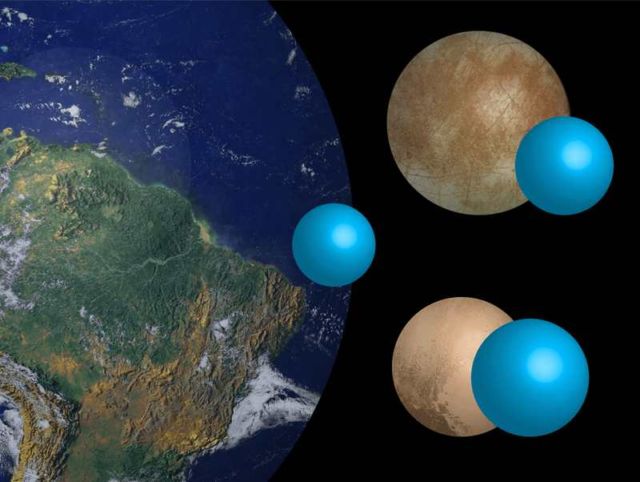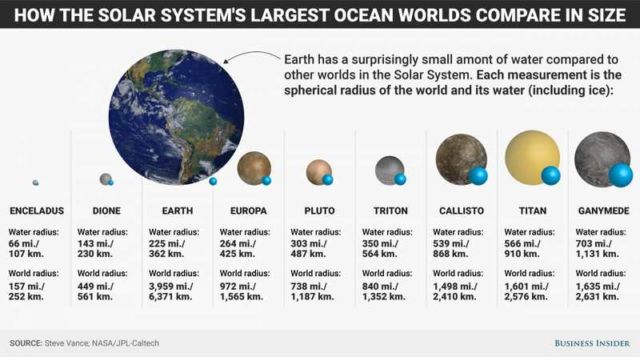Earth harbors about 320 million cubic miles (1.3 billion cubic km) of water, which is nothing compared to the rest of our solar system.
Europa, a moon of Jupiter, about the size of our own Moon, hides a subsurface ocean with more than twice as much water as in our planet.
Above, image credit Skye Gould/Business Insider
The chemical elements in water, hydrogen and oxygen, are some of the most abundant elements in the universe. Astronomers see the signature of water in giant molecular clouds between the stars, in disks of material that represent newborn planetary systems, and in the atmospheres of giant planets orbiting other stars.
There are several worlds thought to possess liquid water beneath their surfaces, and many more that have water in the form of ice or vapor. Water is found in primitive bodies like comets and asteroids, and dwarf planets like Ceres. The atmospheres and interiors of the four giant planets — Jupiter, Saturn, Uranus and Neptune — are thought to contain enormous quantities of the wet stuff, and their moons and rings have substantial water ice.
Perhaps the most surprising water worlds are the five icy moons of Jupiter and Saturn that show strong evidence of oceans beneath their surfaces: Ganymede, Europa and Callisto at Jupiter, and Enceladus and Titan at Saturn.
This illustration depicts the best-known candidates in our search for life in the solar system:
via businessinsider
source jpl.nasa








Leave A Comment